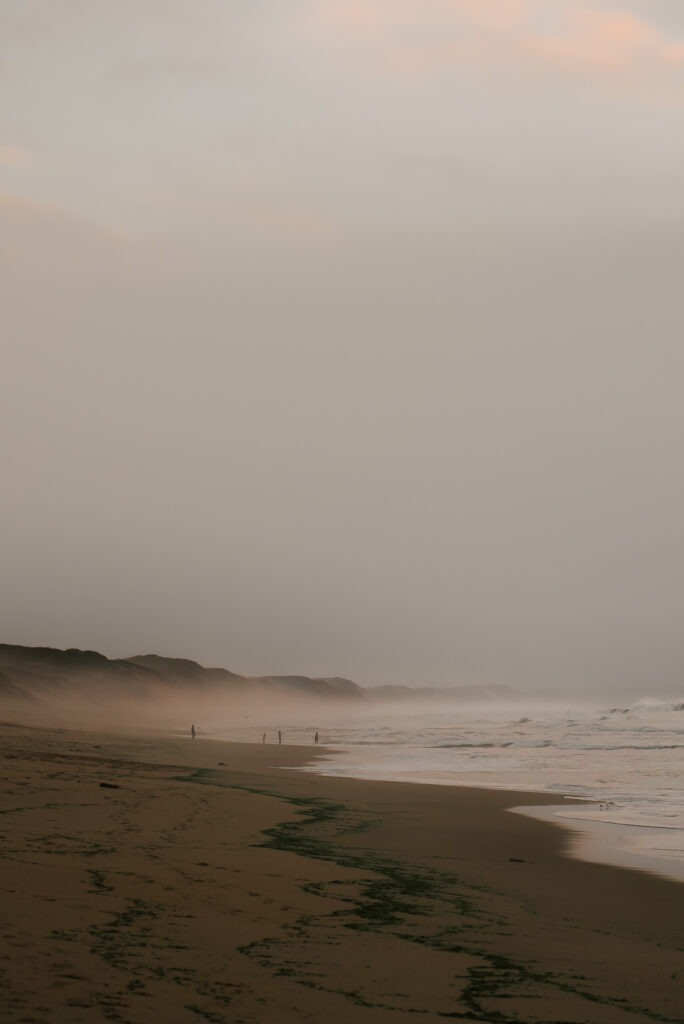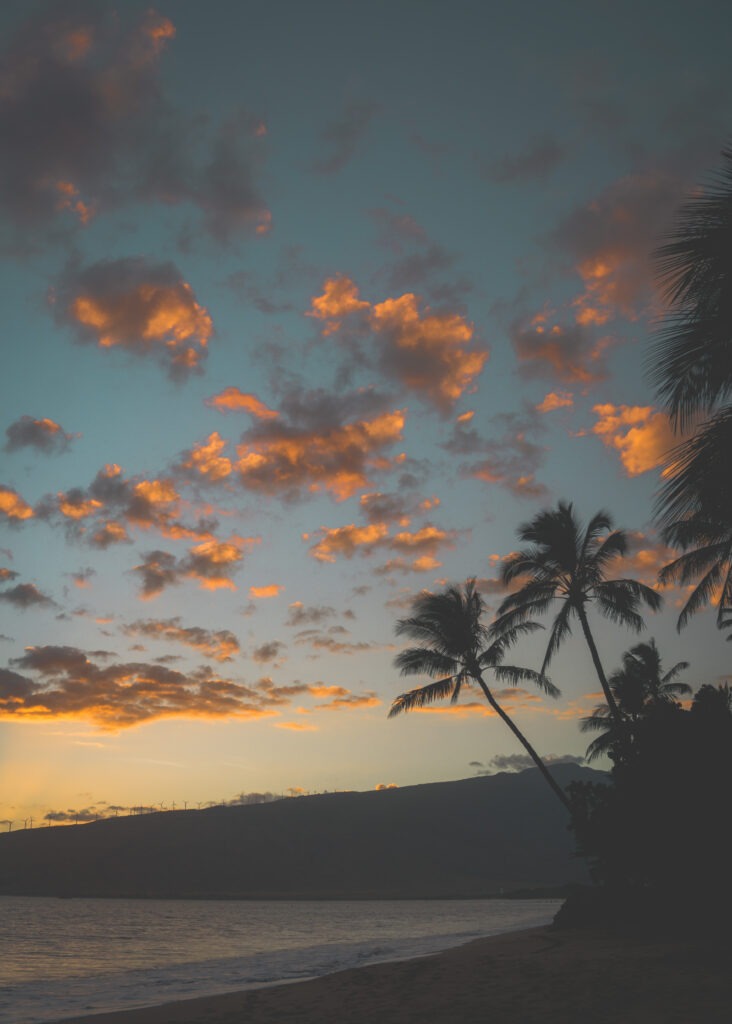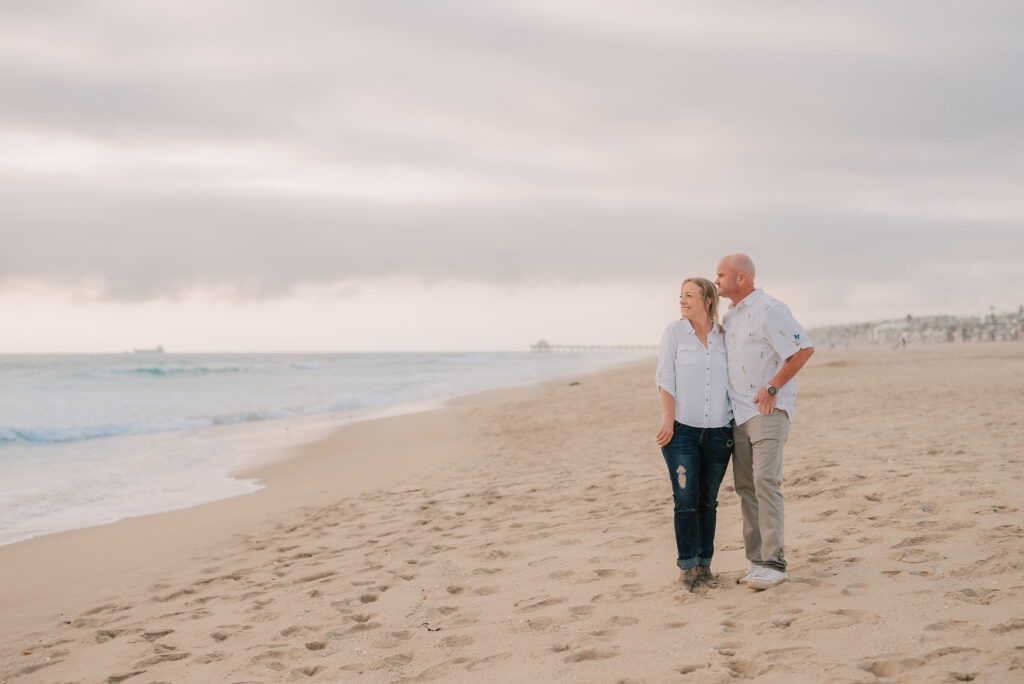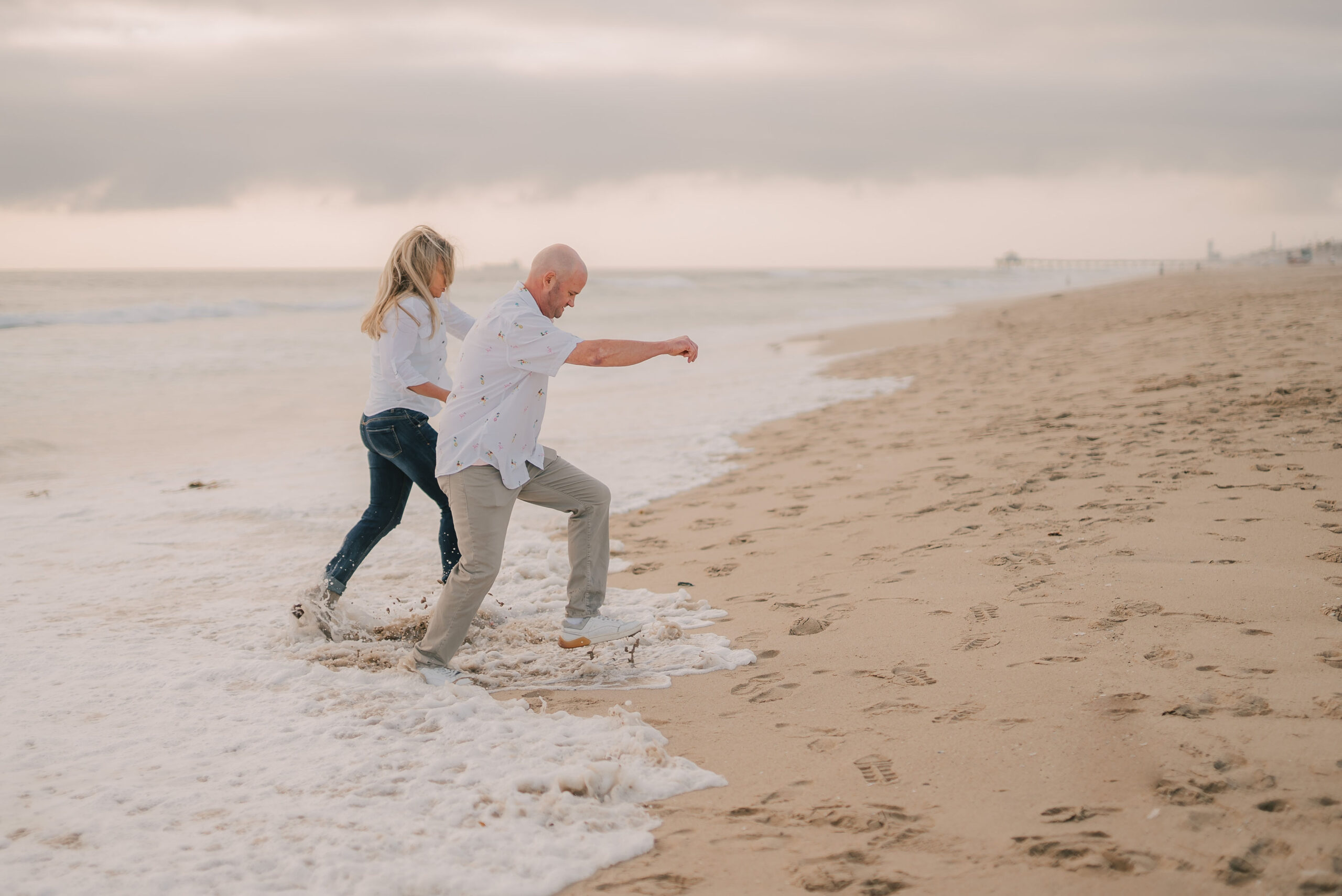As a photographer, I’m often asked: “When is the best time to capture stunning beach photos?” Is it the golden hour after sunrise and before sunset, or the blue hour that occurs before sunrise and after sunset?
Golden Hour (1-2 hour window before sunset) offers soft and directional light that flatters skin tones and creates warm and glowing backgrounds. On the other hand, Blue Hour (20-30 minutes after sunset) provides cool, even lighting perfect for dramatic silhouettes and vibrant sky colors.
Nowhere does light transform a scene more beautifully than during these fleeting moments when day meets night on the beach. Today, everyone is a photographer with a good camera phone in hand. We don’t just chase light; we capture it. However, the most challenging, yet not impossible, task is figuring out which natural lighting for photography will tell your story the best.
As someone who has spent over 10 years behind the lens, capturing moments in all kinds of lighting conditions, I’ve learned a lot about how light shapes the narrative of a photo. Let’s figure out what the best time for beach photography is.
Understanding Golden Hour for Beach Photography



If you’ve ever been outside right when the sun’s dipping low or just peeking over the horizon, and everything looks like it’s dipped in honey- that’s Golden Hour. It’s like nature’s own Instagram filter, with no editing needed.
This magic happens twice a day (right after sunrise and just before sunset) when the sun’s hanging low, throwing soft, golden light instead of that harsh midday glare. The best part is you get at least some time in your hand to capture peacefully.
The light travels through more of the atmosphere, so it’s warmer, diffused, and way more flattering. With glowing skin tones and landscapes that look straight out of a movie, you’ll barely find any disturbing shadows.
So, who needs it? Literally anyone with a camera. Portrait photographers swear by this light because it smooths out imperfections and adds a romantic, almost magical quality to every shot. Golden Hour is non-negotiable, especially for wedding and beach engagement photo sessions. Even landscape and street photographers chase this light for its rich colors and dramatic depth. And if you’re just snapping pics for fun, this is your secret sauce for the next most viral social media posts.
But you need to be right with the time. If you miss the chance, you’ll be stuck with flat light and, even worse, pitch dark. If you’re serious this time, I would highly recommend you check the sunset/sunrise app to scout your spot early and be ready to shoot fast.
Understanding Blue Hour for Beach Photography

Unlike the warm glow of Golden Hour, Blue Hour is when nature swaps its golden palette for deep cobalt blues and soft lavenders, and sometimes even a hint of dusky pink. The sun completely disappears below the horizon, yet its residual light creates an ethereal and almost otherworldly atmosphere.
This time is a gift for photographers who appreciate subtlety and mood. Urban photographers thrive during Blue Hour. The city lights begin twinkling against that rich indigo sky and create striking contrasts. Landscape artists use this window to capture serene scenes where water reflects the sky’s cool hues like polished glass. Even portrait photographers can leverage this light for evocative and introspective shots with a cinematic edge.
But here’s the thing: Blue Hour is fleeting. Depending on your location and season, you might only have 20-40 minutes to work with. And preparation is the key. So, arrive early, use a tripod for stability in low light, and experiment with longer exposures. If you miss it, you’ll be waiting another 24 hours for your next chance.
What Time To Avoid?
The most challenging time for sunset beach photography is between 10 AM and 3 PM when the sun hangs high in the sky. This midday light creates several technical and aesthetic difficulties that can compromise your images.
The primary issue is the sun’s harsh and direct overhead lighting. This creates unflattering shadows under facial features (like eyes, nose, and chin) while simultaneously causing highlights to blow out. Skin tones appear washed out rather than naturally radiant. Landscapes lose their depth and dimension under this flat, high-contrast lighting.
And it’s not just the light that’s the problem. Midday is peak time for crowds, whether you’re shooting in a city, at a beach, or even in a park. You’ll constantly be battling photobombers, and your photographer will spend more time waiting for people to move than actually capturing your shots. Plus, the heat can make everyone irritable- sweaty, shiny skin isn’t a great look for portraits.
So what’s the alternative? Early morning or late afternoon, always. Sunrise sessions mean empty locations and crisp, clean light, while ocean sunset photo shoots bring that dreamy Golden/Blue Hour glow. And if you’re worried about losing sleep or hiking back in the dark, just pack a flashlight and embrace the adventure.
Golden/Blue Hour Photography Tips
Capturing breathtaking photos during golden and blue hours is an art. And it requires more than just showing up. These fleeting moments demand preparation and technique to transform good shots into extraordinary images.
To make the most of these magical and natural lighting for photography conditions, follow these essential techniques:
- Position Subjects Strategically – Have subjects face the light for even illumination or use backlighting for a dreamy, radiant glow
- Modify Exposure – Bracket your shots or slightly underexpose them to preserve rich sunset colors without losing highlight detail
- Enhance Warmth – Set your white balance to “Cloudy” or “Shade” to intensify golden tones naturally
- Stabilize Absolutely – Use a sturdy tripod and remote shutter to prevent blur during long exposures
- Layer your composition – Combine static foreground elements with the evolving sky for dynamic shots
- White balance creatively – Experiment between white balance to find your perfect blue tone
Conclusion
Great photography isn’t about perfect conditions—it’s about knowing how to work with the light you’re given. And creating the perfect sunset beach photograph (exactly as you’ve envisioned) requires more than just being present. It demands skill, technique, and, most importantly, patience and practice.
As a seasoned photographer, my best advice? Scout your location ahead of time and plan your compositions in advance. The difference between a good shot and a breathtaking one often comes down to preparation. But above all, master the timing. It’s your most powerful tool.
Golden Hour and Blue Hour wait for no one, and neither should you.
If you’re looking for someone for California beach photography who speaks the language of light fluently and who can anticipate those fleeting moments when waves, wind, and wonder align I’d love to be your guide. I can literally turn your golden hour dreams into framed realities. Explore Nicholas G Photography for more information or contact details.
